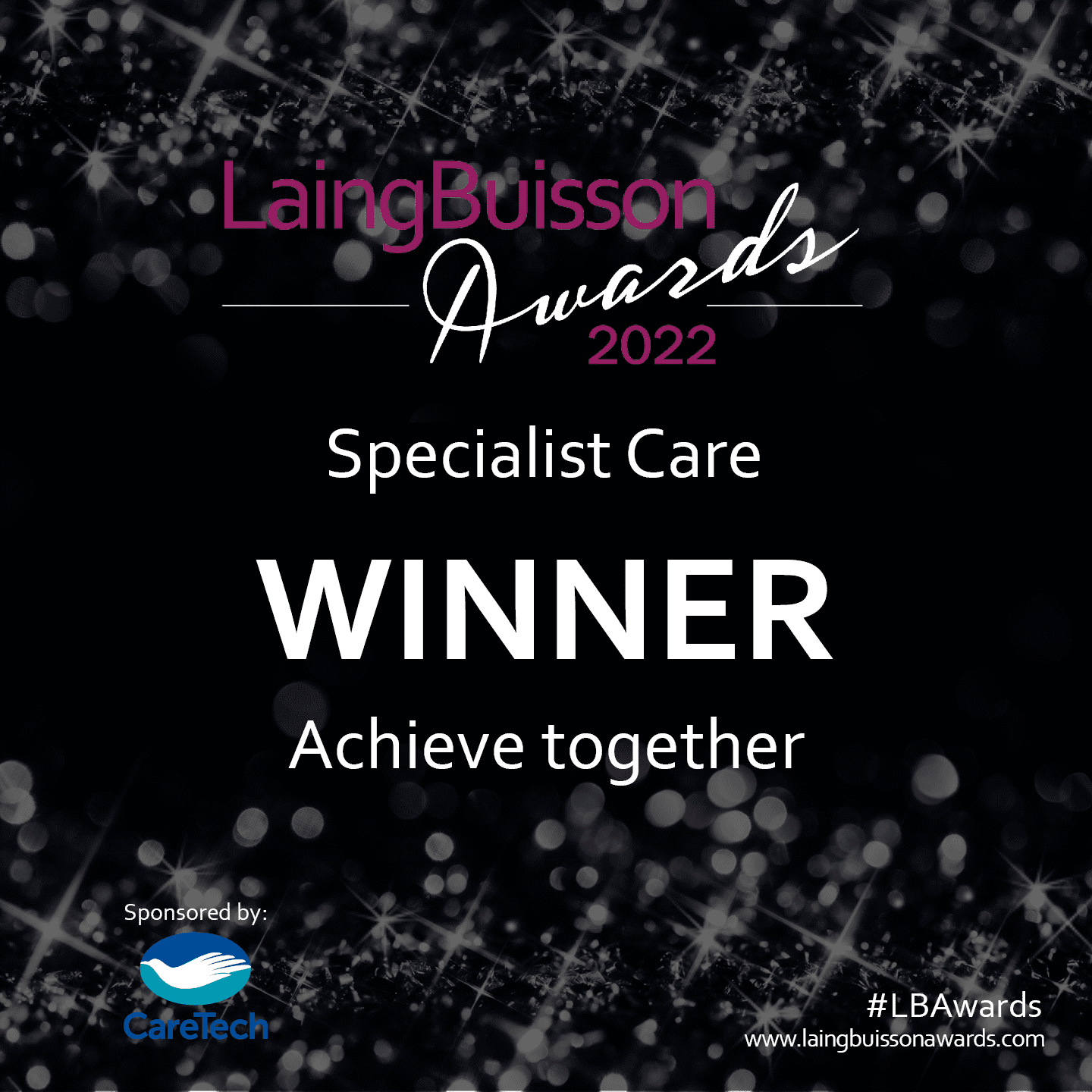I have to confess: I am writing this Mental Health blog just as much for you as I am for myself.
Recently, I’ve been phoning some of the homes to offer well-being support and it’s been both amazing and inspiring to hear some of the fantastic work you are all doing in the homes at such a difficult time. It’s also important to recognize that some people are struggling, we need to be there to support those that are finding it difficult to cope.
As we continue to navigate these unprecedented challenging times, I am asking myself: “what resources do I have that can help me and you through this? How can I remain responsive to the challenges I have without letting fear, panic or anxiety set in?” I continue to remind myself to open up my box of resources; those I’ve collected over the years, those I have used before and have helped, and to use these.
Who, like me over the last few weeks, has struggled to sleep, stayed up late into the night watching the news or reading COVID-19 articles, bought too much pasta, started panicking about not having enough loo roll, got angry with loved ones for not staying home? Started drinking more coffee, and found it difficult to concentrate, been a bit teary, angry and constantly in the fridge looking for things to eat?
If you’re having a wobble you also may have also noticed that you’re more argumentative, have disturbed sleep, may be feeling restless, or desperate for information. Or are you teary and overwhelmed, perhaps feeling a bit sick? Struggling to make decisions? Just want to stay in bed? Tummy upsets? Having palpitations, butterflies, headaches? Laughing unexpectedly or saying random, inappropriate things? Or have you just completely gone to ground?
If you are feeling any of these things: good news! You are not going mad. And you are 100% not alone. You are, in fact completely normal; a fully emotional, functional, human being. Congratulations!
Why? We’re in the middle of a crisis that showed up unexpectedly. It’s frightening and it makes us feel totally out of control, especially on top of anything else we have going on.
Why are we feeling like this?
A bit of science: The culprit is a tiny part of the brain called the amygdala. This part of the brain first developed during ancient times when we are exposed to threats like Saber-Toothed Tigers, and we needed to deal with them. It’s the bit in charge when we are frightened and right now, it’s on full ‘loudspeaker’ mode. At the moment to the amygdala, everything looks like a threat. It’s pretty basic and has two settings: fight or flight. (There is also freeze, meaning you just get paralysed). So this is what your body gets prepared for- we either fight or we run away!
This “fight-or-flight” response is responsible for increased heart rate, heightened senses, a deeper intake of oxygen and the rush of adrenaline. Cortisol is also released, and if the body makes more cortisol than it can release, the brain’s ability to function properly is impaired. This impairment results in a constant state of fight-or-flight and an increase in anxiety. These chemicals are also largely responsible for a huge range of other cognitive, physical and emotional reactions like I mentioned early on.

In a group fear situation like a pandemic, this tends to happen whether you think you’re scared or not. Your body reacts even if your conscious mind doesn’t.
Obviously, this is all great if you really are running away from a Saber-Toothed Tiger, but we’re now in a situation where we’re being asked to do the exact opposite of running away. We are being told to stay at home and self-isolate. We are having to process large amounts of information, making complicated decisions, and needing to stay calm. This is happening while that bit of your brain is running around yelling ‘Run, Run, Run (Tiger).’ This isn’t easy.
The result is an awful lot of stress and anxiety. If you’re anything like me, you end up feeling really overwhelmed and having all sorts of reactions.
The signs and symptoms that we have already explored can affect us mentally, physically and behaviourally. We also become very bad at making decisions, absorbing information and of thinking rationally, which is what we really need to do.
SO WHAT TO DO:
Well, the good news is it is possible to calm the amygdala, and not just by distracting it with cake, tea or bingeing on box sets. There are some solid, scientifically proven things you can do.
Here’s a few suggestions:
BREATHE. It’s so basic, but breathing exercises are basically magic. They work in minutes and you can do them anywhere. They work because of all the physical reactions the amygdala triggers. Rapid breathing is the only one that we can consciously control. Control your breathing and you are basically telling your body, it’s OK. Your body will then start to dial down the adrenaline and cortisol and all the other reactions will slow to a halt. How to control your breathing? It’s easy – and if you want help just put ‘two minute breathe bubble’ or ‘Box breathing’ into YouTube.
CALL A FRIEND: Don’t suffer alone. Call a mate – someone who’ll listen while you have a bit of a rant, or a cry, or a general wobble. Someone you can trust not to judge you, and who’ll just sympathise. And if you get one of those calls, just be nice to them. You only need to be kind. You can’t fix what’s going on so just give them a bit of space to rant. And if you’re OK, call your friends and check in on them. Especially if they’ve gone silent.
LAUGH: it doesn’t matter what is funny – laughter is a huge releaser of endorphins. Silly clippings, WhatsApp, Facebook, jokes, stand-up, playing around with your kids, videos on YouTube. The sillier the better! These are also very good for bonding with friends, which will also help you feel less alone.

DO SOMETHING WITH YOUR HANDS. Yes, you can meditate if this is your thing, but if it’s not, then trying to start when you’re already anxious is really hard. So do something instead. Cook. Tidy. Knit. Draw. Bake. Garden. Mend things.
TREAT YOUR BODY: We hold stress in our bodies at least as much as our minds. Take a bath or a shower. Put on things that feel good on your skin. Use nice smelling body creams. Stretch. Skip. Do yoga. Dance. Eat healthy but delicious things – try to include you 5 a day. All of these will help calm you down.
SUNSHINE…amid this nightmare – enjoy it. If you can’t go outside, open the windows and feel it on your face. If it’s safe for you to go outside do it, while of course observing social distancing, go for a walk. Being outdoors and connecting to nature is hugely calming.
STEP AWAY FROM SOCIAL MEDIA/THE NEWS: All it will do will scare you more and make things worse. Turn off the telly. Stick to sensible sources and limit yourself to short need-to-know bits a day. You’ll feel better immediately.
BE KIND to yourself and others. Now is not the time to go on a diet, nor is this the time to massively change or makeover your life. You’ll probably struggle to concentrate, fail and make yourself feel worse. Don’t make this more stressful than it already is. Think comfort books, comfort telly, comfort everything. Everyone is going to have a wobbly, everyone is going to have a meltdown at some point. Understand that if someone is angry or aggressive, then they are also just scared.
I have recently added to eLFY, ‘Coping with going to work during COVID-19’, and there are also lots of other tips to help support you through this crisis. If you get the opportunity, please have a look at them- they’re under the COVID-19 folder.
Please continue to write on the blog its lovely to hear from you, share your ideas of how you are coping. Also check out last months blog here.
In the meantime take care and stay safe,
Shirley

